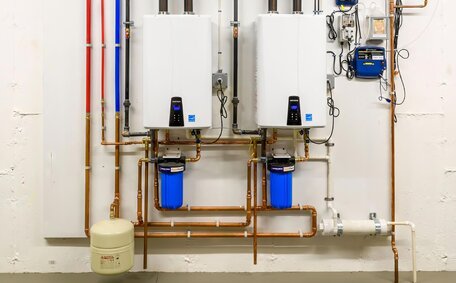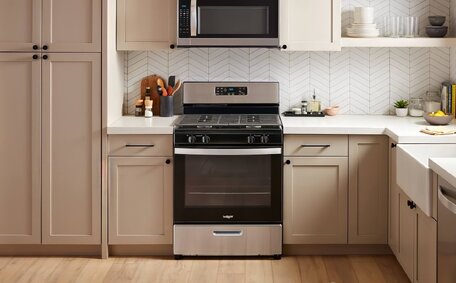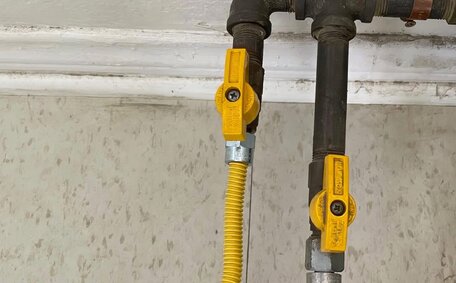
How Hard Water Hurts Hot Water Heaters
Hard water leaves mineral deposits in heaters, pipes and tanks. This limescale reduces efficiency, lifespan and hot water availability. Contact us for affordable water softening solutions.
Read MorePipe relining is a state-of-the-art, trenchless technique for fixing sewer pipes which avoids complete pipe replacement or significant excavation.
The relining process begins with a camera inspection to assess the condition of the pipe and locate any defects or blockages.
Following the curing, the pipe is cleaned and readied for liner installation.
Once cured, the epoxy liner essentially creates a new "pipe within a pipe" - to find out more about restoring structural integrity, flow capacity, and leak protection to the sewer line.
Pipe relining effectively repairs pipes affected by cracks, root intrusion, and corrosion without the significant costs and disruptions of full replacement. It’s an efficient, long-lasting solution that can extend the lifespan of ageing sewer systems for decades.
Following the lacement
How long does pipe relining last? It provides a host of advantages over traditional pipe replacement, which can be eructures
For sewer pipes located beneath landscaping, patios, or structures, pipe patching and relining can prevent the need for disruptive excavations. Efficient pipe work through relining addresses plumbing repairs with minimal intrusion, requiring only a single access point rather than extensive excavation.
Sewer relining is ideal for addressing both sewer and stormwater systems, especially when pipes are situated in hard-to-reach areas. Resin liners can be maneuvered around bends and angles, offering a practical solution where traditional pipe replacement is not feasible.
Sewer pipe relining avoids the disruption of digging up your garden, offering a stark contrast to traditional replacement methods. Access is only required at the entry points, and the quicker, mess-free process avoids any major excavation.
I found that the pipe relining cost for this service was very competitive, averaging around 60% less than full replacement. Savings come from reduced excavation, materials, and labour. Relining extends the life of your existing pipes at a fraction of the price.
Pipe relining is often favored over traditional replacement when sewer lines are damaged but maintain structural integrity. A professional plumbing inspection can determine if does pipe relining suit your pipes, including a blocked drain, as suitable candidates for trenchless pipe relining solutions.
The restoration of damaged pipes through relining consists of three primary steps:
The result is a renewed pipe with a protective epoxy barrier. Pipe relining restores flow capacity, seals leaks, and prevents further corrosion or damage. The epoxy liner is structurally reinforced for longevity, providing a long-term solution without needing to dig up and replace the existing sewer pipes.
Here is a step-by-step overview of the relining pipe process:
During curing, the liner bonds to the original pipe, forming a jointless, seamless 'pipe within a pipe’ with restored structural integrity. With proper maintenance, there no concerns that drain relining can ensure a relined sewer line lasts 50 years or more.
I am very happy to share that choosing pipe relining offers numerous benefits over traditional pipe repair methods:
The strategic method pipe repair, like relining, proves to be considerably cost-effective, securing your savings by bypassing the heftier expense of full pipe replacement. By preserving your existing pipes, the way we approach relining proves to be a cost effective strategy, letting you sidestep the expenses of new pipe materials and extensive excavation work.
Pipe relining is a trenchless process, requiring access only at entry points. It preserves surrounding structures, landscaping and surfaces since there no need to dig, avoiding the involved hassles.
Pipe relining can be executed swiftly and efficiently, minimizing the disruption compared to more time-consuming traditional pipe replacement. Resin curing times are usually between 2-4 hours, and projects can completed in as little as one day.
Epoxy liners can also extend the life of pipes by 50 years or more, making them ideal for dealing with and preventing blocked drains. The seamless pipe within a pipe formed by relining prevents root intrusion and further corrosion.
Emu Plumbing is recommended for their expertise in relegating damaged pipes to full functionality by rectifying imperfections with relining. Any protruding laterals or obstructions are eliminated.
Discover why pipe relining best serves as a superior pipe repair method for your high-quality drain repair needs on the Gold Coast, offering a durable and economical alternative to traditional replacement.
While pipe relining is an excellent trenchless repair method in many situations, there are some limitations and considerations to keep in mind:
If a damaged pipe has significant cracks, breaks, or misalignments beyond a certain point, relining may not be possible. The liner requires a generally continuous interior surface, which we would ensure adheres properly.
When I called and they came out to assess my plumbing system the expert team at Picnic Point Plumbing, they promptly performed a detailed camera inspection to determine the viability of pipe relining for my situation. They can evaluate the condition and alignment of the pipes.
Access points are required for the liner to be carried out at both ends of the pipe during the relining process. Lack of access could rule out relining.
Relining liners are cylindrical, so cannot conform to non-circular pipe shapes like box drains or unusual dimensions.
Relining can seal minor root intrusions; however, significant root masses within pipes must be removed before relining can proceed.
The key is proper evaluation which we would ensure by a licenced plumber. They can advise if pipe relining is the right solution for your situation or if full replacement is required instead.
Relined pipes can have exceptional durability and longevity when installed correctly. High-quality epoxy resins and professional curing methods allow relined pipes to last upwards of 50 years.
Properly installed pipe liners have been proven to extend service life by decades. Studies show that with proper maintenance, relined pipes have a typical service life of 20 to 50 years. In some cases, they have been found to last over 50 years before needing replacement.
The durability of a relined pipe depends on several key factors:
When high-standard materials and installation techniques are used, relined pipes often exceed the lifespan of the original pipes. Trenchless relining restores ageing pipes for decades of further service while avoiding costly and disruptive pipe replacement projects.
Relined pipes can have exceptional durability and longevity when installed correctly.
Studies show that with proper maintenance, relined pipes have a tys:
Determining if your sewer pipes a signs of damage like cracks, leaks, or root intrusion can be successfully relined. Pipes with severe corrosion, collapsed sections, and major misalignments may not be good candidates.
Key indicators your pipes could benefit from relining include:
If a camera inspection reveals your sewer lines have repairable damage without complete pipe failure, relining could restore them for decades rather than needing full replacement.
A very professional plumber will determine if your pipes are viable for relining or if replacement is needed and provide you with information about pipe relining. Upfront pipe assessment and cleaning like hydro-jetting maximises the effectiveness and longevity of any relining project.
Determining if your sewer pipes are suitable candidates for pipe relining depends on the results of a professional CCTV drain inspection. A plumber will snake a camera through your pipes to evaluate their condition and suitability for relining.
In general, pipes that are structurally sound but show signs of damage like cracks, leaks, or root intrusion can be successfully relined.
When considering pipe relining, make sure to ask prospective companies key questions to ensure they are the right fit for your project:
we’ve been delivering top-quality relining services since 2015.
I would definitively use them again next time, assured by the company’s professionalism that they are well-versed in indelining services and will provide a year guarantee on their work, often for 10 years or more. We provide a lifetime warranty on all our pipe relining projects granting you ultimate peace of mind.
Look for a pipe relining Sydney company with a commitment to minimising mess and inconvenience. Picnic Point Plumbing takes pride in our service where everything is cleaned up, ensuring a tidy, hassle-free experience.
Do not hesitate to contact email us or call 1300 349 338 to discuss your relining needs with our team of experts.
Proactive maintenance of your plumbing system is essential in preventing expensive repairs in the future. Explore the numerous benefits pipe relining offers as part of maintaining your sewer system in optimal shape:
An ounce of prevention is especially valuable for maintaining your sewer drain in flawless condition. Contact the plumbing services and trenchless pipe relining specialists at Picnic Point Plumbing to discuss a custom maintenance plan.
Hard water leaves mineral deposits in heaters, pipes and tanks. This limescale reduces efficiency, lifespan and hot water availability. Contact us for affordable water softening solutions.
Read MoreIt’s important to routinely check your gas appliances for any issues. Signs of problems include gas leaks, strange sounds, odd smells and more. Have a professional inspect your gas appliances annually and service them regularly for safety.
Read MoreUpgrading your gas meter is a simple process completed by registered technicians. It involves disconnecting your gas supply for 15 minutes to swap the old meter for a new digital smart meter. The upgrade is free and improves accuracy.
Read MorePicnic Point, 2213 NSW
We will call back as soon as possible.




